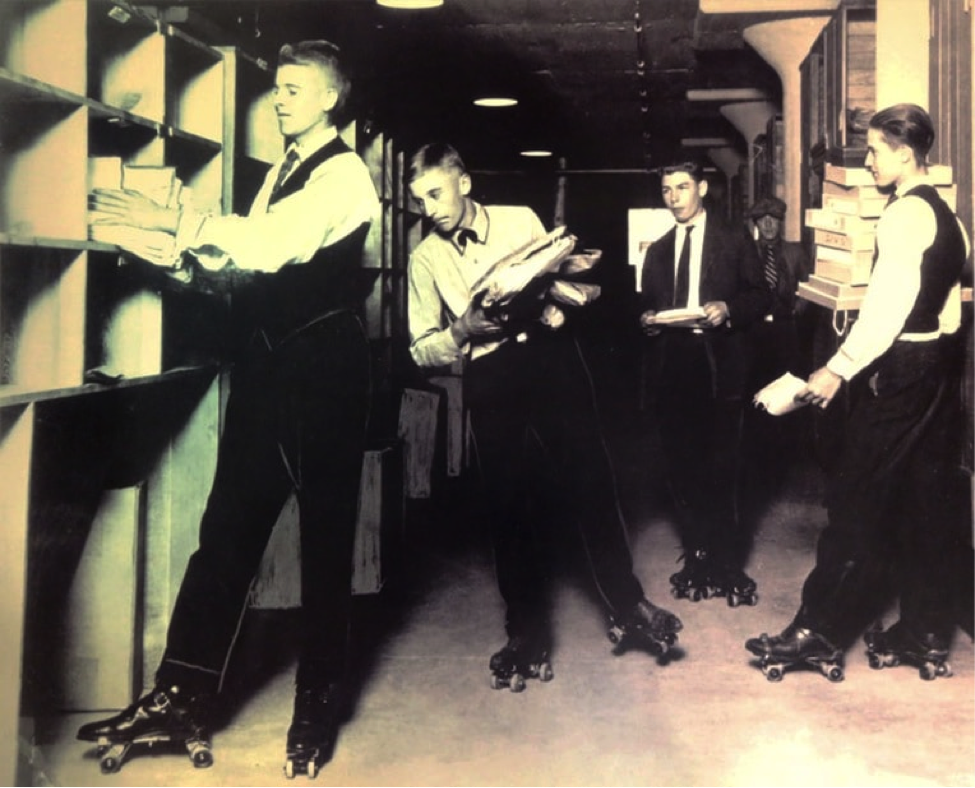
 Pickers roller skated between departments at the Montgomery Ward Catalog House. Photo Credit: 600 West Management
Pickers roller skated between departments at the Montgomery Ward Catalog House. Photo Credit: 600 West Management
Recently, I enjoyed an architectural tour along the Chicago River, which I would highly recommend. Our guide described engineering marvels such as the Willis Tower (originally the Sears Tower) which is actually made from nine structures for optimal wind resistance. Another interesting story was about how they reversed the flow of the river to limit water pollution and lose the "stinking river" nickname.
Heading deeper inland, the guide's stories shifted toward old warehouses that have since been re-purposed as apartment buildings and condominiums.
One of these warehouses was the former Montgomery Ward "Catalog House,” a 5-story building running the length of 2 ½ football fields. This was the distribution center for the retailer’s booming catalog business at the start of the 20th century.
Minimize Travel Time
When it opened in 1908, pickers would travel aisles on roller skates to prepare orders for shipping across the country. Forget safety – the practice highlights the desire to minimize travel time in high-variety distribution operations.
In today’s e-commerce environment, this challenge represents a significant part of warehouse slotting and pick line design. The challenge is to provide pick fronts for every product without generating excessive travel and, on the flip side, without creating disproportionate replenishment tasks and/or congestion.
Part of the answer resides in Pareto’s law and how to handle the minority of SKUs that generate the majority of order lines. Pick lines must provide easy and sufficient access to fast moving items and include exit points to skip over slow product whenever possible. Solutions include parallel pick lines and duplicated work cells (however, the later still poses I.T. challenges in terms of multi-front replenishments).
Data-Driven Analysis of Your Current State
Regardless of your industry, you should base your pick line engineering and warehouse slotting decisions on a thorough analysis of each SKU’s contribution to sales as well as on replenishment implications.
If you do not feel like doing the analytical grunt work we can certainly help, or you can just tell your crew to put on their rollerblades or pick up a skateboard and fly through those aisles as fast as possible.
Are you facing productivity issues originating from excessive travel? If so, let me know how you’re tackling the problem in the comment section below.
